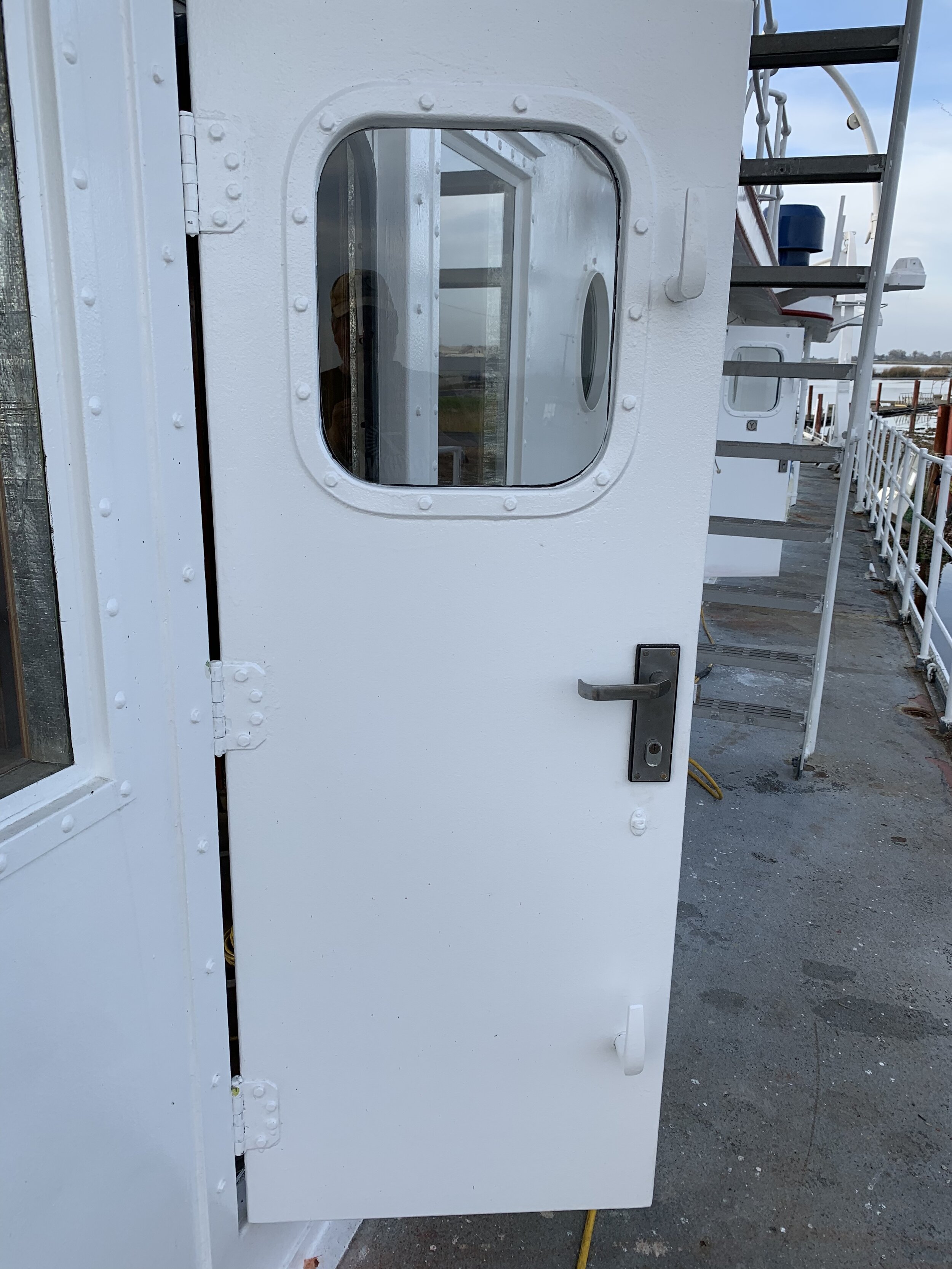Glass
Apparently, plexiglass became a fad in the 1980s. The last major overhaul of the Fir occurred in 1988. At that time, the upper deck door windows were converted to plexiglass along with several portholes. Since that installation, time (32 years) and the sun have oxidized the plastic. Most became scored. Nearly all suffered from overspray when painting the hull.
We experimented with several glass options beginning with 5/16ths tempered glass. It only took a couple of Bay Area wind storms to slam the doors hard enough to leave shattered glass all over the deck. We then tried 1/4 inch laminated glass with an automotive U-channel type gasket. The U-channels looked great with a sharp, professional line separating the door and glass. Unfortunately, there is not enough room between the containment ring and door to accommodate the gasket. If the containment ring was not dead flat, torquing down the ring broke the glass. It was a tricky install.
Another complication was that the upper deck doors are hand drilled. Although they appear very similar, the spacing of the bolts in the containment ring varies from door to door by a small amount. We took our cue from the Coast Guard and installed the new glass using chalk. PPG Top Gun 400 is an elastomeric acrylic urethane that remains pliable as well as paintable. So far…. so good.
Doors
Through most of her life, Fir had screen doors on every upper deck entrance. The doors pictured above opened outward and were secured to the house with brass fittings. Inside these doors were oak screen doors that opened inward and were secured by internal hardware. Previous ownership removed/sold/salvaged most of the screen doors, leaving only two attached to the old Wardroom. Hopefully, we can use these as patterns to replace many of the screen doors on the upper deck.
We want to dress up the Fir a bit without changing her character. With this in mind, we decided to “grain” the inside of the upper deck doors. “Graining” is a painting technique used to create the look of natural wood grain on a painted surface. You start with a very bright yellow base coating. This gets covered with a translucent brown, dragging the brush to create a woodgrain effect. Adding red and/or black, each coat following is more translucent producing the depth and characteristic seen in varnished wood.
Fir has three different types of wood throughout: oak, mahogany, and teak. Each one has reacted differently to time and exposure depending upon the location. For example, oak in the Wheelhouse has a very yellow tone, while the oak on the upper deck is much darker.
Pictured below is an incomplete door on the upper deck. It still has some problem areas and will need a clear coat when finished, but at first glance, it appears to be a pretty good match for the surrounding wood.
Windows
The window exteriors around the Wheelhouse have been a real pain in the ass. The forward windows leak and likely created one of the only areas of corrosion. This area happens to be in the crawlspace between the floor of the Wheelhouse and the ceiling of the Wardroom.
We decided to seal the side windows on the Wheelhouse where the glass is curved and seemingly the most obvious source of leaks. All these windows had copper frames. We cut new gaskets for the forward windows so that they can still be raised and lowered and have made it through the 2020 rainy season so…. so far, so good.
The exterior wooden frames of the Wheelhouse windows were not in great shape. While the frames had plenty of good wood available, there were gaps and essentially no protectant layer. After sanding, we applied Nautipoxy Penetrating Epoxy from Bonstone. We followed this with Bonstone Nautithane Pro. The results looked great, but 12 months later the top layer started to flake. We sanded again and applied a one-part solution from Interlux. Looked great, but it also started to flake. Now we are trying a clear coat of PPG’s PSX700. It looks great, today. Let's see how it lasts.


